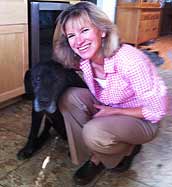Search Programs
When you click on a sponsoring school or program, or fill out a form to request information from a sponsoring school, we may earn a commission. View our advertising disclosure for more details.

“We fight all forms of animal cruelty to achieve the vision behind our name: a humane society.”
Pam Runquist, Executive Director of the Humane Society Veterinary Medical Association
In addition to the burgeoning of spring and new life, April honors our animal friends with Prevention of Cruelty to Animals Month. The annual 30-day campaign is hosted by the American Society of the Prevention of Animal Cruelty (ASPCA) and offers opportunities for the public to become involved in safeguarding the wellbeing of animals.
The ASPCA combats animal cruelty with advocacy efforts focused on dogfighting, the commercial puppy industry, animal hoarding, farm animal welfare, horse slaughter, cockfighting, and greyhound racing. Actions to address the effects of these practices include animal rescue, placement, and protection.
Veterinary professionals are needed in animal welfare not only to care for animals subjected to cruelty but also to participate in animal protection initiatives. This is the work of the Humane Society Veterinary Medical Association (HSVMA). The organization involves veterinary professionals in a variety of ways by providing opportunities to participate in animal welfare education; animal protection initiatives; community and field service work; and animal welfare programs.
However, preventing cruelty to animals requires a dedicated citizenry, too. The ASPCA and other animal welfare nonprofits like the Humane Society of the United States (HSUS) lead animal protection policy-making efforts as well as the prevention of animal harm inflicted by industries like agriculture, entertainment, fashion, and cosmetics. But their efforts depend on the support of concerned individuals and volunteers willing to lend their time (and/or money) to the cause.
Two experts generously offered their knowledge on the topic of preventing animal cruelty: the executive director of the HSVMA, Pam Runquist, and Laura Link, public information manager of the Oregon Humane Society.
Meet the Experts: Pam Runquist and Laura Klink

Pam Runquist has held a leadership role with the HSVMA since its inception in 2008. She began as director of veterinary advocacy and moved on to senior director of veterinary outreach before taking her place as executive director three years ago.
Ms. Runquist’s career in animal welfare began prior to her work with the HSVMA with positions at the Association of Veterinarians for Animal Rights and a national animal protection group, RedRover. She enjoys feral cat trapping in her free time and has a collection of animals that include four rescue cats and a senior lab (pictured above).

Laura Klink has been the public information manager of the Oregon Humane Society since 2018, but her relationship with OHS began 20 years prior. Ms. Klink began volunteering for the organization in 1998 and over the next 17 years served in a variety of roles including dog walker, magazine writer, foster parent, and founder of the “Running with Dogs” program.
In recognition of her service, Ms. Klink was awarded the Oregon Humane Society Lifetime Achievement Award in 2012.
Cruelty Toward Animals in the 21st Century
Animal cruelty takes many different forms and ranges from unintentional neglect to acts of intentional harm or killing. The majority of investigated neglect cases are unintentional and resolved through education. Cases of intentional cruelty towards animals, on the other hand, are indicative of psychological distress. Such individuals have often been victims of violence themselves and may be prone to perpetrating further acts of violence towards animals or people.
In fact, research compiled by HSUS has shown evidence for a strong correlation between cruelty towards animals and other forms of abuse such as child, spousal, and elder abuse. In one survey, 71 percent of domestic violence victims reported that their abuser also targeted pets. Another study found that pet abuse had occurred in 88 percent of families under supervision for physical abuse of children. Animal cruelty is also one of the criteria used by the American Psychological Association to diagnose conduct disorder.
Neglect and direct abuse of animals may be caused by:
- Hoarding
- Lack of veterinary care
- Inadequate shelter
- Chaining (of dogs)
- Abandonment
- Pets left in cars
- Beating and physical abuse
- Animal fighting and other forms of organized cruelty
On the state level, Laura Klink and Veronica Broadley of the OHS Humane Law Enforcement team shared their thoughts on one of the biggest threats to animal welfare currently faced in Oregon. “The economic hardship brought on by the pandemic is a big concern,” they explained. “Will pet owners be able to feed their pet, provide vet care or find affordable housing?”
The Response to Animal Cruelty
In light of the alarming number of ways harm is inflicted on animals today, Runquist shed light on how the HSUS is responding:
We protect all animals through legislation, litigation, investigation, education, science, advocacy, and fieldwork. And together with our affiliates, we rescue and care for tens of thousands of animals each year…We take on puppy mills, factory farms, the fur trade, trophy hunting, animal cosmetics testing, and other cruel industries. We rescue and care for thousands of animals every year through our Animal Rescue Team’s work and other hands-on animal care services.
The HSUS has animal welfare initiatives focused on ending animal cruelty of all kinds by providing animal rescue, wildlife protection, and farm animal protection. While animal rescue involves saving victims of animal fighting operations, puppy mills, and large-scale cruelty and neglect, the wildlife department protects animals in the wild from egregious forms of killing. The farm animal protection team improves conditions for animals used for food.
Animal rescue and care teams rely on the time and expertise of veterinary professionals who participate in animal welfare advocacy through the HSUS veterinary affiliate, the Humane Society Veterinary Medical Association (HSVMA). Runquist shared that in 2019 alone, 200 veterinary and veterinary professional students received hands-on training through the HSVMA’s rural area veterinary services program and an additional 3,000 veterinary professionals attended their educational presentations on animal cruelty and other animal welfare-related topics.
Rundquist related that current students of veterinary medicine “who have demonstrated an interest in and commitment to animal welfare, animal rights, or animal protection issues in veterinary medicine” are eligible to apply for the HSVMA’s Compassionate Care Veterinary Student Scholarship.
The organization also provides training to animal welfare agencies, law enforcement, and prosecutors in addition to:
- Promoting public education
- Advising local agencies and providing grants to support local cases
- Direct intervention and rescue in large-scale cruelty cases
- Conducting investigations for institutionalized agribusiness cruelty
- Lobbying for stronger animal protection laws
- Offering rewards for information leading to animal fighting or cruelty convictions
Klink highlighted OHS’s efforts to help families with pets experiencing financial hardship to continue to care for their animals: “Preserving the animal-human bond and keeping pets with their families is a priority in animal welfare,” she said.
Some of the ways OHS has facilitated this is by hosting free pet food banks and distributing pet food around the state which further revealed the enormous need for such services. Klink shared is that OHS is currently breaking ground on a Community Teaching Hospital to provide veterinary care for under-resourced pet owners.
Prevention and Advocacy
Since South Dakota joined the fight in March of 2014, animal cruelty laws now include felony provisions in all 50 states. Iowa is currently the only state that does not have a law providing felony penalties for animal torture on the first offense.
Runquist urges concerned individuals to become familiar with the protections that currently exist in their communities and states and to speak up to their appropriate local agencies when they suspect cruelty in their community. She also explained the importance of individuals engaging at state and local levels to advocate for legislation or ordinances to better protect animals when existing protections fall short.
Klink also called attention to this, explaining that, “Current laws require evidence that the animal was injured in addition to evidence the animal was abused. Due to delays in reporting and other factors, evidence of the injury cannot always be gathered before the animal has healed.”
She further emphasized the importance of reporting animal cruelty for the good of animals and humans alike:
The general public may not be aware that there is a strong connection between domestic abuse of people and animal abuse, and children living in abusive environments sometimes model what they see. If people witness a child abusing animals, they should report to local authorities who can evaluate the safety of the child as well as the animals.
How to Get Involved in Animal Advocacy
April Is Prevention of Cruelty to Animals Month
The American Society for the Prevention of Cruelty to Animals offers ways for everyone to honor animal welfare throughout the month of April including National Dog Fighting Awareness Day (April 8) and Help a Horse Day (April 26).
Take action any time of year on behalf of animals everywhere through volunteer opportunities with the advocacy center, the national field response team, or the horse action team. Information is also provided on learning how to report animal cruelty and make decisions that help farm animals.
Humane Society of the United States
Donate, fundraise, or volunteer in a variety of ways with HSUS. Find virtual and local volunteer and internship opportunities with animal rescue; the legislative fund; policy, outreach, and engagement; media relations; farm animal or wildlife protection; rural area veterinary services (for vets and vet techs); and continuing education.
A variety of ways for everyone to participate in animal welfare are also provided, such as Meatless Mondays, going fur-free, purchasing cruelty-free cosmetics, and pledging not to support captive marine mammal shows.
Humane Society Veterinary Medical Association
Veterinary professionals, including veterinary technicians and vet tech students, can join HSVMA and participate in the prevention of animal cruelty.
Direct care volunteer opportunities include Rural Area Veterinary Services (RAVS); Pets for Life; Animal Rescue Team; Animal Care Centers; Humane Society International. Advocacy and outreach volunteer opportunities are also available with the HSVMA with the state representative program, advocacy, the speaker’s bureau, and the student mentor program. Interested veterinary professionals can email for more information.
Oregon Humane Society
Adopt or sponsor a pet through the Oregon Humane Society, get involved in fundraising, or support animal legislation efforts. Local to the Portland area? Consider volunteering when COVID restrictions lift or volunteer from home from anywhere using this guide. Don’t forget to check out the special offers on the Shop to Help Pets page of the website!
Finally, here are just a few places to donate on behalf of preventing animal cruelty:
- ASPCA: Ways to Give | Donate | Charitable Contributions
- HSVMA: Give Now | Support the Humane Society Veterinary Medical Association
- HSUS: Donate to Support Our Biggest Fights
- OHS: Ways to Give
Runquist shared these closing thoughts: “Our primary mission is to prevent cruelty before it occurs. The public can support these efforts by visiting our website www.humanesociety.org and getting involved by donating, volunteering, or learning more about how to be an advocate in their community.”

